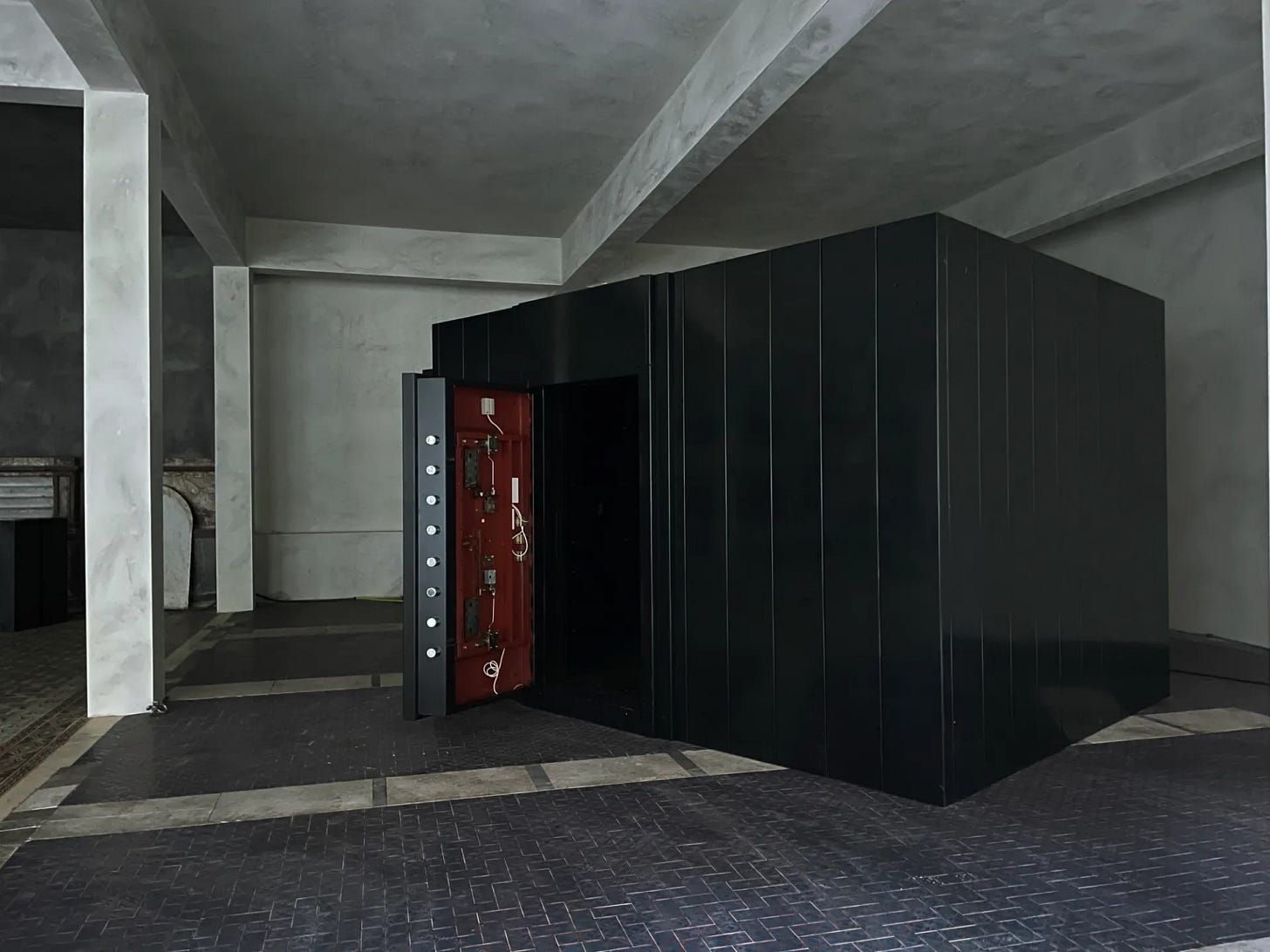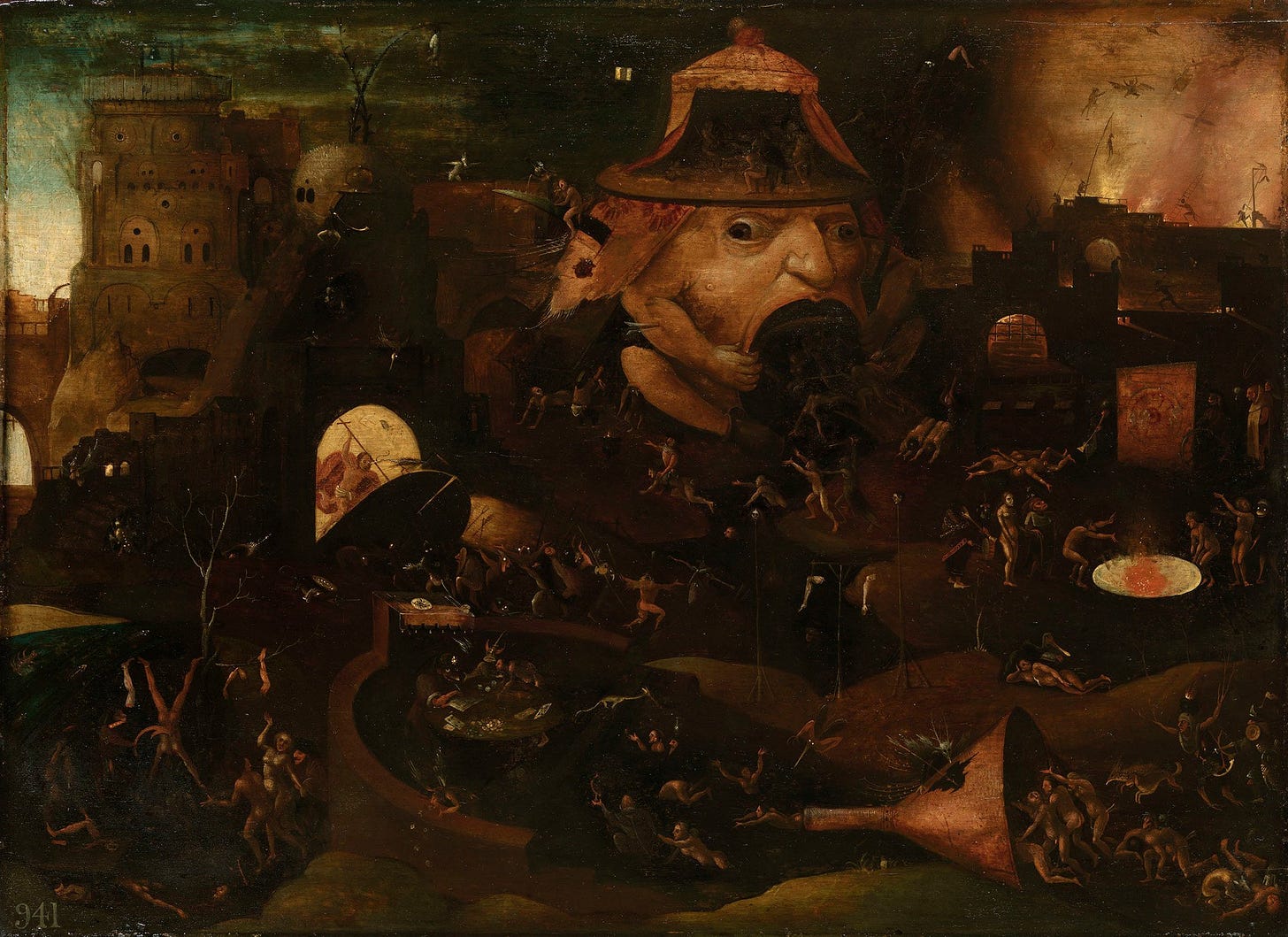Maybe because I’ve been watching True Detective, I’ve been thinking about horror. Horror is the kind of genre that, once under your skin, you start to see everything from the lens of potential jump scares—art included.
Two years ago, I was invited to a “mystery” Soho House event at Miami Art Week. They didn’t tell you what the event was; you just showed up at an assigned location and trusted the Soho House to provide a memorable night. It was the premiere of a horror film for special members of a scary movie club in Miami. I wish I were joking.
Here’s the thing: I thought it was a video art piece for the first thirty minutes of the screening. I sat there with an open mind until the jump scares started coming, and I started screaming.
On a recent visit to Mercer Union in Toronto, I started to worry the same might happen. The video piece, by Parastoo Anoushahpour, Faraz Anoushahpour, and Ryan Ferko, is gently ominous. A man is interviewed, but his face is scratched out in hyper-pigmentation. On a separate screen, footage from a helicopter circles a gorge. The film explores the death of cinematographer French filmmaker Albert Lamorisse in 1970. When I learned this, I thought: yup, horror.

While scary movies are one of my least favourite genres, I don’t mind horror in art. Art reflects life—so it’s fitting for the uncomfortable, traumatic, and tragic to infiltrate artists' practices.
Here’s some horror-adjacent art news this week.
A Montreal teacher is accused of selling his students’ artwork online at prices ranging from $30 to $120.
Performance artist Wolfgang Flatz planned to auction his tattoos to the highest bidder. The auction was cancelled—because one collector bought all the lots before it began. After his death, the tattooed skin (art?) will be delivered. I hate it!
If you were a Roald Dahl fan as a child, as I was, you might recall this is almost the exact premise of the short story “Skin,” where a man sells his tattoo, which was done by Soutine. You can read it here, but the formatting isn’t great.
You probably remember the distressing news from last year that two workers—both 24-year-old women— were stabbed in the MoMA. This personal essay from one of the survivors unpacks what it feels like to have your near-death consumed in the media as a spectacle.
“Because it happened in an art museum, the event was immediately aestheticized. I remember seeing pictures of the empty crime scene snapped by a shell-shocked coworker, the little block heel footprints that I left in the blood like tracks in snow.”
The $1 Billion Art Collection That’s Tearing a Family Apart.
A few top scary moments in art:
A recreated hotel room from the hostage scene at the Munich massacre. I saw it at the Barcelona Museum of Contemporary Art by Swiss artist Christoph Draeger, and I’ve never forgotten the feeling of standing in this installation— trigger warning for disturbing images.
Paintings by Luc Tuymans and the deeper meaning behind them.
No one does horror better than Hieronymus Bosch.
How do people interact with being faced with an excess of blood, the evidence of a potential crime? They don’t care. The horror that Ana Mendieta exposed only became more horrific as it became pertinent to her own life.
Okay…that’s enough for one day. Promise next week will be more optimistic…hopefully.








